Present-Day Šiauliai
Šiauliai is the fourth largest city in Lithuania, the centre of science, culture and economy of Northern Lithuania, which has retained deep traditions of the city of industry and enterprising people. It is a city with over 106 thousand inhabitants, but the area of the city is almost equal to Klaipėda – its territory doubled when Zokniai airport and vicinities were connected in the Soviet period and the city’s southern area was built. At one point in time, Šiauliai was the third largest Lithuanian city, only after separating Ginkūnai area from the city, Šiauliai again returned to the fourth place. The majority of the population is Lithuanians. This was not always the case. Still at the beginning of the last century, the majority of the population was made up of Jews, who left a deep historical, cultural and economic trace in the city, as well as Russians, Germans and members of other national communities.
Šiauliai became involved in the development of self-governance straight after announcement of independence. During the years of the first Republic of Lithuania, namely Šiauliai created the first democratic municipality in Lithuania. Thus, it was not surprising that, not even a month after the proclamation of the Independence Act, Šauliai authorities already gathered to the first session of the city’s Council of People’s Deputies (soon renamed as the council of Šiauliai municipality), where they elected a chairman who, after a couple of weeks, was replaced by the elected mayor of the city.
On September 7th, 1993, on his way to the Hill of Crosses (Jurgaičiai Mound), located near Šiauliai, Pope John Paul II visited, prayed and rested in Šiauliai. Following this visit, by his special decree, Šiauliai Peter and Paul’s Church was given the title of the Cathedral, this way transforming Motiejus Valančius’ words about the Cathedral of Samogitia that stood here for 400 years in his times, into reality; the Diocese of Šiauliai was set up.
From 1993, the ‘Aušra’ Museum begins to expand rapidly and takes over the Radio and Television and Bicycle Museums and Ch. Frenkelis’s Villa. Upon completion of reconstruction works of the Villa, which were started in 1995, the Villa becomes a new cultural-representative place, the centre of most of the city’s high culture events, hosting exhibitions in its premises and the inner courtyard, a place of meetings with artists, concerts, performances, and art festivals. In 2009, according to the project prepared by the ‘Aušra’ Museum for the funds of Lithuania and Norway (according to the Norwegian financial mechanism), Žaliūkiai windmill, one of the most important accents of Šiauliai city landscape and the centre of ethno-culture and traditional crafts, and the 19th century miller’s farmstead, standing nearby, were restored and adapted to the public needs. In addition to these projects, the Museum completed the reconstruction of one of its units, the Museum of Photography, adding the top floor and turning the Museum into a four-storied building with an open-air terrace on the roof open for visitors and events. This is the only institution of this kind in Lithuania, dedicated to the art and equipment of photography.
In 1997, upon the decision to reorganize Šiauliai Pedagogical Institute and Šiauliai Polytechnic Faculty of Kaunas University of Technology, Šiauliai University was established. Over the years, the higher education institution grew, joining new spaces, turning them into its divisions and, at the same time, established close international relations with other universities of the world, becoming a significant player in the city’s region.
The Zokniai airport belonging to the city serves both military and civilian purposes. The traditions of Šiauliai as a national defence point, known since the Middle Ages, remained: there is a military air base at the airport, where since 2004, NATO fighter aircrafts patrolling the air space of the Baltic States have been deployed. In addition, cargo aircrafts of international companies are taking off and landing.
In 2007, Šiauliai Arena, a multifunctional complex for sports, mass culture and chamber events, was officially opened. It hosts the city’s all biggest sports, business and cultural events, including the European Basketball Championship group tournament matches in 2011 and performances of world music celebrities.
The University, non-university higher educational institutions, the drama theatre, the ‘Aušra’ Museum, professional art groups, and a new sports arena provide Šiauliai with perspectives to remain the attraction centre of the whole region. The city fosters its history and strives to become a modern European city.
The city is created and each time reconsidered by its people, so it is people who will decide what awaits Šiauliai in the future. One after another new monuments are created for those who lived and matured as creators and as people, such as Algirdas Julius Greimas, a world-renowned scholar in linguistics or signatories to the Act of Independence of 16 February, 1918. Alongside, new scampy ideas and artistic works, creating the image of a playful and lively city, are born. These are accompanied by active renewal works, renovation of the city’s public spaces, gaining a new concept, initiated construction works of the city’s central square. Thus, the city is changing, modernizing and steadily moving in the rhythm of the 21st century.


















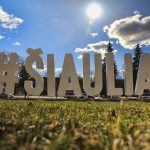
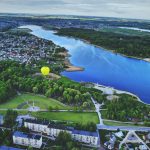
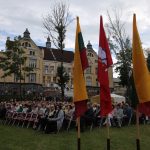
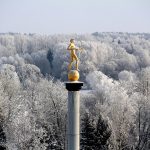
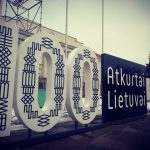
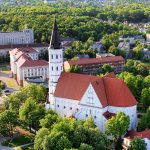

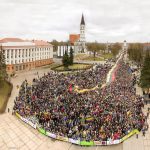
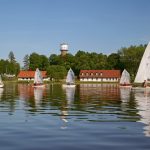
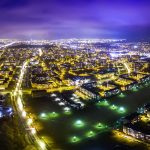
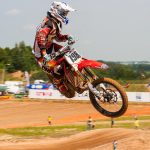


Leave feedback